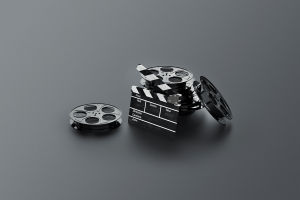Are you new to comic drawing and wondering what tools you need to get started? Well, we’re here to guide you through the essentials! Whether you’re creating your first comic panel or exploring a new hobby, understanding the right tools can make all the difference in bringing your artistic vision to life.
Let’s dive into the world of comic art tools and learn what each one brings to the table.
Paper: The Foundation of Your Art
When it comes to creating comics, paper plays a crucial role in the overall outcome. The most commonly used types of paper for comics include specialized comic paper, drawing paper, watercolor paper, and thick white card stock. For smooth, precise lines, it’s important to choose paper that is smooth, white, and strong enough to handle ink without bleeding.
The texture should be fine to the touch, and the paper should be able to dry quickly after inking. Common sizes are A4 and B5, typically weighing 80g-100g. If you’re using a lightbox, make sure your paper isn’t too thick, as this can make it difficult to trace.
Pencils: The Sketching Tool
Pencils are essential for initial sketches, and it's important to pick the right one for your needs. The general recommendation is to use pencils in the range of HB to 4B. Avoid pencils that are too hard, as they can leave marks on the paper, and steer clear of pencils that are too soft because they may smudge easily. Whether you choose a traditional pencil or a mechanical pencil is up to your preference. Some artists prefer the versatility of a regular pencil for sketching, while others prefer the clean, consistent lines of a mechanical pencil.
Colored Pencils: Adding Vibrancy to Your Work
Colored pencils, or “color pencils,” are an excellent and easy tool for adding color to your sketches. They come in various colors and offer a transparent, light finish that gives a fresh and simple look to your comic. The color goes on smoothly, and they’re easy to erase if you make a mistake. Colored pencils are ideal for beginners and come in sets ranging from 12 to 96 colors, so you’ll have plenty of options for adding vibrancy and detail to your artwork.
Erasers: Precision and Clean-up
An essential tool for any artist, erasers help correct mistakes and refine your lines. There are different types of erasers, such as regular soft erasers, artist-grade erasers like the 2B, 4B, or 6B, and even kneaded erasers. The type of eraser you use will depend on the type of pencil and ink you are working with, as well as the effect you want to achieve.
Ink: Defining Your Lines
Inking is where your comic starts to take its true form. Ink, often used with dip pens, allows you to create smooth, crisp lines that define the shapes in your comic. You can also use drawing ink or India ink for bolder, thicker lines. Some artists prefer to dilute the ink slightly to prevent it from drying too quickly on the nib. The type of ink you use will depend on the effect you want—whether it’s fine, detailed lines or bold strokes.
Paints and Markers: Adding Depth and Color
For those looking to add more depth and richness to their work, colored paints and markers are perfect. While paints offer a thicker, more saturated color, markers give a lighter, more fluid touch. If you're going for a more painterly, intense style, colored paints might be the best choice, while markers are ideal for vibrant, smooth color applications in a quick and controlled manner.
Brushes: Softening Your Lines
Brushes are a great tool for applying both color and linework. They allow for more control, whether you need to create delicate details or fill in large areas with color. Brushes also work well for mixing colors and adding textures to your comic. Many artists use brushes for painting backgrounds or even for fine lines, offering a softer and more expressive effect compared to a pen or pencil.
Ruling Pens and Markers: Fine-tuning Your Artwork
Ruling pens, or dip pens, allow for greater control over your line thickness, making them an essential tool for any comic artist. Ruling pens come in various nib sizes and can be used for both outlining and adding intricate details. Markers, on the other hand, are quick and efficient tools used for coloring and adding depth. Whether you’re using them to fill in backgrounds or add highlights, markers are great for bringing a comic to life.
The Importance of Choosing the Right Tool
Selecting the right tools for your comic style is important because each tool produces different effects and works better with certain techniques. For instance, a fine-liner pen offers sharp, precise lines, while a brush pen allows for softer, varied strokes. By experimenting with different tools, you can find the ones that suit your unique style and help bring your comics to life.
Start Drawing!
Now that you know the basics of comic drawing tools, it’s time to get started! No matter your experience level, the right tools can help you bring your creativity to the page. So, pick up your pencil, start sketching, and let your imagination run wild. Happy drawing, Lykkers!
Essential Acrylic Painting Supplies! (Beginners)
Video by Emily Mackey Art







